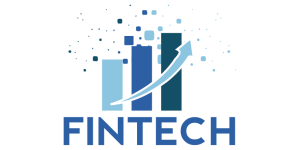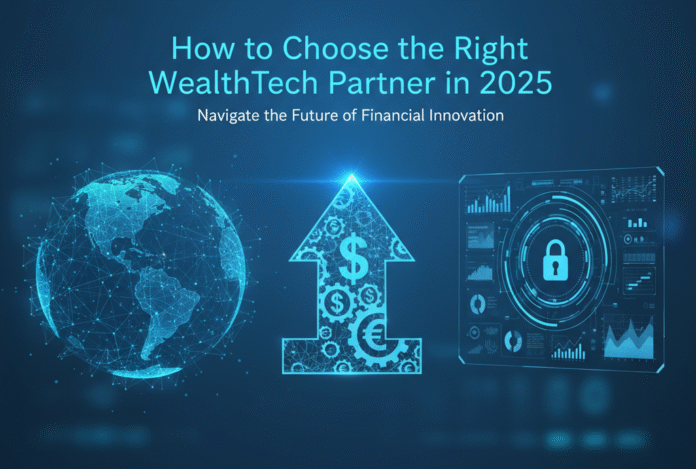In 2025, WealthTech has evolved from a fintech buzzword into the strategic backbone of modern wealth management. As institutions strive to deliver data-driven, hyper-personalized client experiences, the choice of a WealthTech partner has become a critical business decision, one that can accelerate growth or stall transformation.
With an abundance of vendors offering automation, analytics, and compliance solutions, the challenge lies not in finding a provider, but in identifying one that truly delivers value. This article outlines a clear framework to help you select a WealthTech partner in 2025 that aligns seamlessly with your business goals, client expectations, and long-term vision.
1. Understanding the 2025 WealthTech Landscape
The WealthTech 2025 ecosystem is expanding rapidly, from robo-advisory tools and AI-driven risk management to blockchain-powered custody solutions.
In 2025, the focus is shifting from digitizing wealth management to intelligent automation and hyper-personalization.
Before choosing a partner, understand where your organization stands:
- Do you need end-to-end wealth management software?
- Or modular tools for analytics, compliance, or onboarding?
This clarity helps you shortlist partners that match your digital maturity and business model.
2. Aligning Technology with Your Business Goals
A WealthTech solution should fit your business strategy, not force you to adjust to its limitations.
Start with clear answers to:
- What problems do you want to solve? (manual reporting, data silos, client retention)
- What goals matter most, automation, customer experience, or scalability?
Your chosen partner should offer:
- Flexible architecture that adapts to business needs
- Custom workflows aligned with advisory models
- Modular design for phased implementation
A goal-aligned partnership leads to measurable ROI and long-term operational efficiency.
3. Compliance and Security: The Non-Negotiables
In the WealthTech 2025 landscape, compliance isn’t optional, it’s existential.
With increasing data privacy laws (GDPR, SEBI, MiFID II), your partner must guarantee:
- Bank-grade encryption & multi-layered authentication
- Regulatory alignment with SEBI, RBI, and global standards
- Audit trails & KYC/AML-ready systems
Insist on seeing ISO 27001, SOC 2, or PCI DSS certifications.
A credible WealthTech partner will proactively address data governance and risk management, not just check compliance boxes.
4. Integration and Scalability: Building for the Future
A great WealthTech solution must integrate seamlessly with your existing CRM, ERP, and core banking systems.
Look for:
- API-first design and Open Banking compatibility
- Data portability to avoid vendor lock-in
- Cloud scalability to handle growing client portfolios
Integration flexibility ensures your business remains agile and future-ready.
Scalability isn’t just technical, it’s strategic. As you expand to new geographies or investor classes, your platform should grow with you.
5. AI, Analytics, and Personalization: The New Core
2025 is the year when AI-driven advisory becomes the norm.
WealthTech platforms must move beyond automation to insight generation.
Your ideal partner should offer:
- Predictive analytics for investment behavior
- AI-powered risk profiling
- Personalized dashboards for advisors and clients
When done right, AI not only optimizes decisions but enhances human advisory capabilities, combining data intelligence with human trust.
6. Partnership Beyond Software: Collaboration for Growth
The right WealthTech partner isn’t a vendor, they’re a strategic collaborator.
Here’s what sets them apart:
- Dedicated account management and post-launch support
- Transparent roadmap communication
- Joint innovation programs to co-create new features
- Training and adoption support for your team
Long-term success comes from shared goals, clear KPIs, and a commitment to evolve together in a fast-changing fintech ecosystem.
Conclusion
Choosing the right WealthTech partner in 2025 is a strategic decision, not a tech purchase.
It demands clarity, due diligence, and a shared vision for growth.
The ideal partner helps your firm become more agile, data-driven, and client-focused.
Remember, in the world of fintech, technology may be the enabler, but partnership is the true differentiator.
I hope you find the above content helpful. For more such informative content, please visit Fintech Maestro.
FAQs
- What is WealthTech in 2025?
WealthTech 2025 refers to the next generation of financial technology solutions designed to automate, personalize, and scale wealth management using AI, blockchain, and analytics. - How does a WealthTech partner help financial firms?
They provide technology platforms that improve portfolio management, compliance, client engagement, and operational efficiency. - What should I look for in a WealthTech partner?
Look for compliance strength, API integration, scalability, data security, and AI capabilities. - Is data security a major concern in WealthTech?
Yes, it’s critical. Ensure your vendor follows global security frameworks like ISO 27001 or SOC 2. - Why is AI important in WealthTech 2025?
AI enables predictive insights, automated risk profiling, and tailored investment recommendations, enhancing advisor productivity. - How do I test a WealthTech partner before committing?
Request a pilot project or proof of concept (POC) to evaluate performance, support, and real-world usability. - Can small firms also adopt WealthTech solutions?
Absolutely. Many modern platforms offer modular, cost-effective tools ideal for boutique advisory firms and startups.











